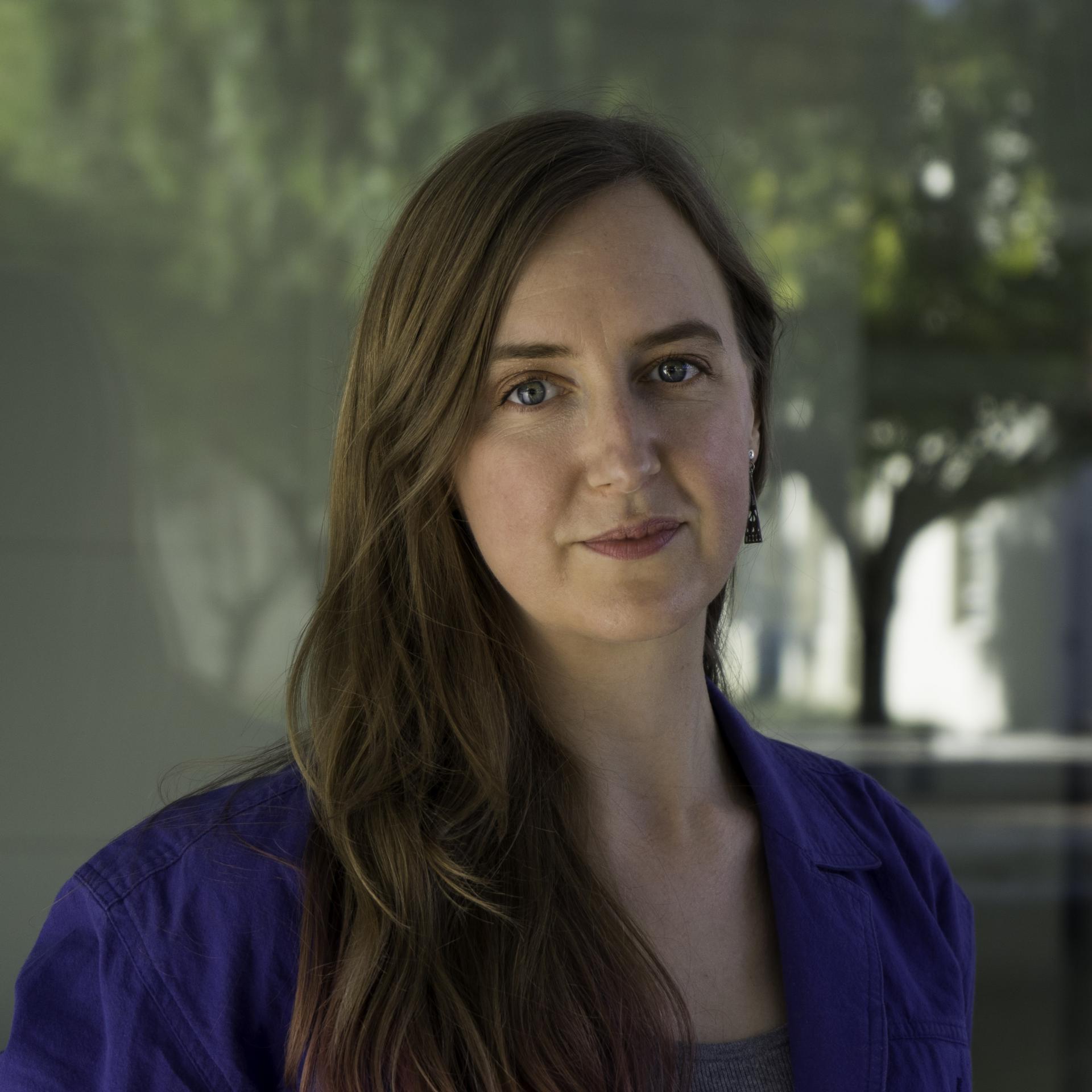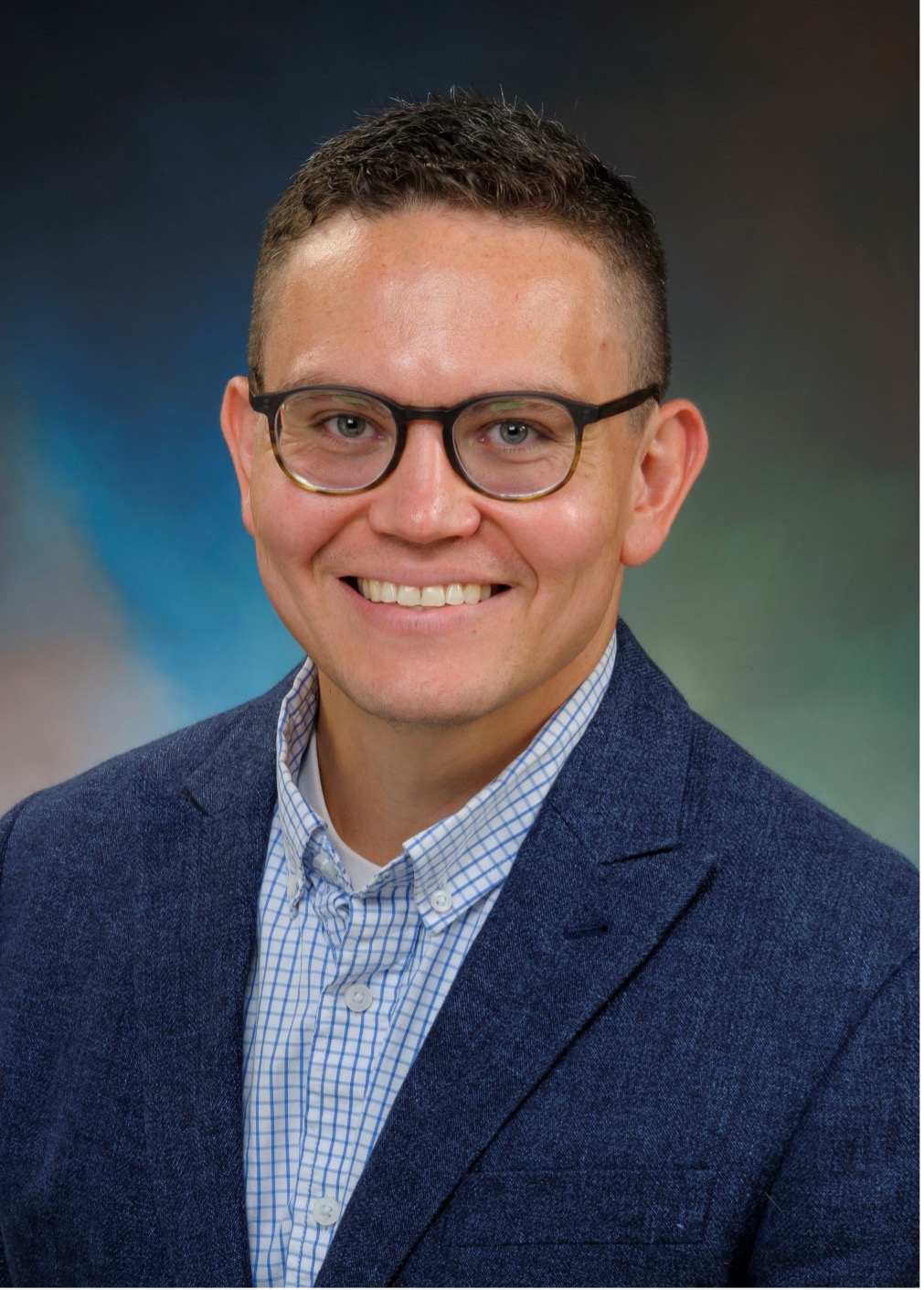
Ash Eliza SmithRe-imagining Place: Rural Substance Use Disorder, Worldbuilding and Community Participatory Design
Ash Eliza Smith is an artist-researcher who uses storytelling, worldbuilding, and speculative design to shape new realities. With performance as both an object and lens, Smith works across art and science, between fact and fiction, and with human and non-human agents to re-imagine past and future technologies, systems, and rural-urban ecologies. She is an Assistant Professor of Emerging Media Arts at UNL and grew up in the foothills of the Appalachian Mountains in North Carolina. Smith has worked as a producer, director, performer, and writer for various studios and media platforms. Her research lab within the Carson Center of Emerging Media Arts: Southern Devices, uses simulation, design fiction and narrative to solve problems, re-imagine systems, and build worlds with emerging technologies.

Dr. Dennis McChargueDeveloping an Advanced Technology for Emotion and Affective Change ePlatform (AT-REACH) for People Recovering from Substance Use Disorders
Dr. McChargue is a Professor of Psychology and Director of Clinical Training for the Clinical Psychology Training Program at the University of Nebraska-Lincoln. Dr. McChargue received his doctoral training at Oklahoma State University with a clinical psychology internship at the Boston VAMC Consortium, which houses one of the National Centers for PTSD. He was later a postdoctoral fellow and research faculty member with a joint appointment at the University of Illinois at Chicago and the Hines VAMC. Dr. McChargue’s primary expertise is in understanding biobehavioral mechanisms that bind substance use with mental illness and hinder recovery from substance use patterns.

Dr. Palsamy PeriyasamyInvestigating the therapeutic potential of N-Acetylcysteine in alleviating cocaine-mediated microglial activation
Dr. Palsamy Periyasamy is an Assistant Professor in the Department of Pharmacology and Experimental Neuroscience, UNMC, specializing in epigenetic research. His work delves into the intricate realm of HIV-1, substance abuse, and their impact on neuroinflammation. By deciphering the epigenetic landscape, particularly focusing on promoter DNA methylation and non-coding RNAs, Dr. Periyasamy aims to uncover the underlying mechanisms that activate microglia and astrocytes, contributing to NeuroHIV. These investigations encompass various substances, including cocaine, morphine, methamphetamine, and alcohol. The knowledge gained from this research holds promise for innovative therapeutic strategies, addressing the challenges of HIV-associated neurocognitive disorders in the era of combined antiretroviral therapy.

Dr. Amanda RodriguezFeasibility of Assessing the Effects of Substance Use on Auditory and Vestibular Function
Amanda Rodriguez, AuD, PhD, CCC-A is an Assistant Professor and Director of the Concussion and Vestibular Evaluation (CAVE) Laboratory at the University of Nebraska-Lincoln in the Department of Special Education and Communication Disorders. She is also a Resident Faculty member in the Center of Brain, Biology and Behavior. She received her AuD/PhD in Audiology and Vestibular Function-Assessment from Texas Tech University Health Sciences Center. She then completed a T32 post-doc fellowship at Boys Town National Research Hospital. Her research interests include examining the effects of sports concussion on the vestibular system and identifying modifiable health risk factors associated with vestibular loss. Dr. Rodriguez is also a practicing vestibular audiologist in the community.

Dr. Michelle HughesFeasibility of Assessing the Effects of Substance Use on Auditory and Vestibular Function
Michelle Hughes, PhD, CCC-A is an Associate Professor and Director of the Cochlear Implant Research Laboratory (CIRL) at the University of Nebraska-Lincoln in the Department of Special Education and Communication Disorders. She received her MA in Audiology and PhD in Hearing Science from the University of Iowa, and completed her clinical fellowship in the Department of Otolaryngology—Head and Neck Surgery at the University of Iowa Hospitals and Clinics. Research interests involve examining the relation between physiology and perception in cochlear implants, investigating ways to incorporate telepractice into cochlear implant service delivery, and exploring ototoxicity effects secondary to substance misuse.

Dr. Ann Anderson BerryA Critical Examination of the Incidence of Neonatal Opioid Exposure in Rural Nebraska
Dr. Ann Anderson Berry is the Vice-Chair of Research and Professor in the Department of Pediatrics, Interim Executive Director of the Child Health Research Institute (CHRI) at UNMC, Division Chief of Neonatology, and the medical director of a high acuity level III NICU and newborn nursery. Her long-term goal is to understand the implications of perinatal health research findings in communities.

Anna HensonSomatic Avatars: A Creative and Embodied Approach to Support Addiction Recovery
Anna Henson is an Assistant Professor of Practice at the Johnny Carson Center for Emerging Media Arts at UNL. She is an artist, researcher, and educator in emerging media arts, with a background spanning theatre, media production, immersive technologies, and human computer interaction research. Her hybrid experience informs her design methodologies and critical perspectives within media, AR/VR, and body-centric technologies. Henson strives to build interdisciplinary and inclusive dialogue through shared language and new processes, and connect diverse ideas, populations, and causes together to creatively solve problems. She holds a Bachelor of Special Studies in Fine Art and Art Therapy from Cornell College, a Master of Fine Arts from The Glasgow School of Art, and a Master of Science in Computational Design from Carnegie Mellon University. Henson has contributed research to ACM and DIS publications, and has worked in art therapy with children, teens, and adults experiencing trauma and mental illness. She has volunteered in arts and play therapy for hematology and oncology patients in children’s hospitals and completed a certification in Mental Health First Aid with the National Council on Behavioral Health. Henson is committed to community-based programs and equity in creative arts, education, and broader health and wellbeing.

Dr. Erik GarciaThe Serotonin 5-HT2AR, a Novel Non-Opioid Target for Opioid Use Disorder
In Fall 2021, Dr. Garcia started his career as Assistant Professor of Neuroscience and Behavior at the University of Nebraska Omaha. He researches the neurobiological mechanisms that dictate the consumption of rewards and reinforcers. After completing his doctoral degree in Experimental Psychology (Behavioral Neuroscience), he went to the University of Texas Medical Branch at Galveston to complete his postdoctoral training. There in the laboratory of Kathryn Cunningham, Ph.D., he researched serotonin and other G protein-coupled receptors families. Dr. Garcia helped reveal a novel series of 5-HT2CR and 5-HT2AR allosteric modulators that alter high-fat food consumption and cocaine and fentanyl relapse.

Dr. Jana PonceUse of Omega-3 Fatty Acis to Inhibit Drug-Induced Inflammation and Synaptic Alterations
Dr. Jana Ponce is a Registered Dietitian and an Assistant professor in the Medical Nutrition Education Division of the College of Allied Health Professions at the University of Nebraska Medical Center in Omaha, Nebraska. Her background is in clinical nutrition with a current research agenda focused on the impact of nutrition interventions in improving neurologic outcomes and inflammation in chronic disease.